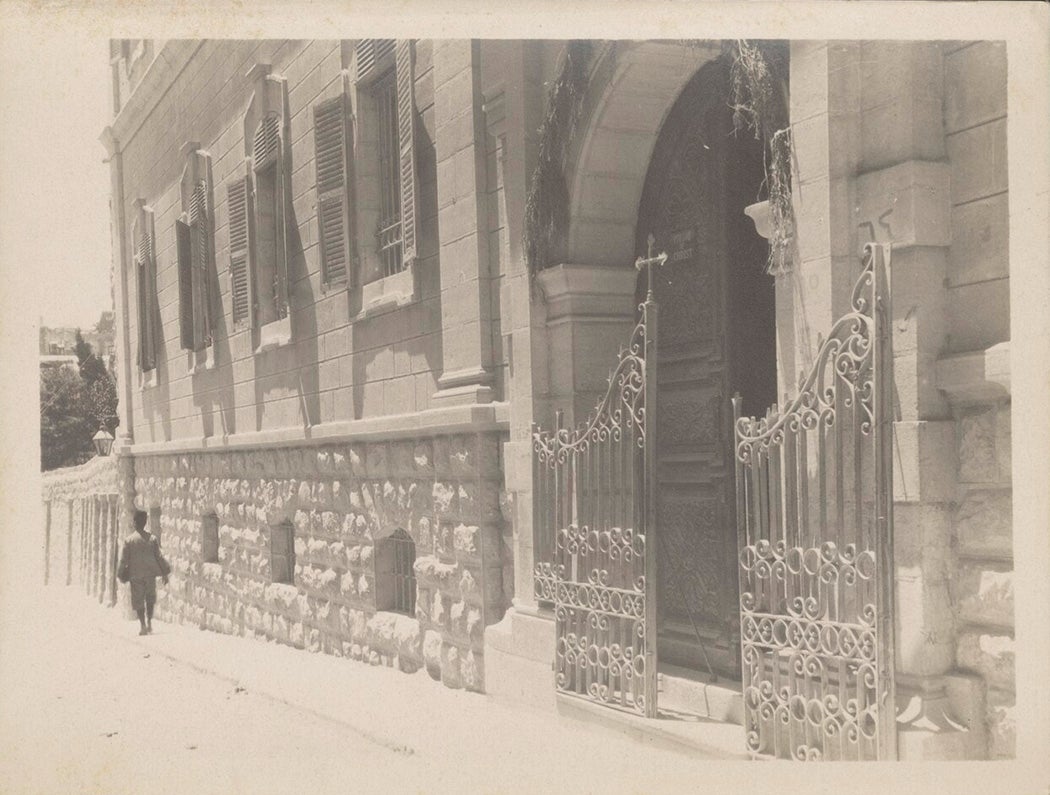After Christian crusaders captured Jerusalem in 1099, pilgrims traveling to the Holy City developed an itinerary of places to visit. Among them, historian Anthony Bale writes, was a spot located in the back of the Church of the Holy Sepulcher known as the Prison of Christ. Accounts of the cell appear in some of the most popular guides for pilgrims visiting Jerusalem.
Bale notes that the canonical gospels don’t explicitly mention Jesus being imprisoned prior to his crucifixion, but they reference him being arrested and led in chains, which some read as implying that he was held captive. However, the church where the Prison of Christ is located was probably built in the early medieval period and Bale writes that it’s almost certain that the site never contained a holding cell for prisoners.
So why did the Prison of Christ become such an important place for medieval pilgrims? Bale notes that prison cells were a common theme in medieval religious culture. At a time when cloistered monks and nuns were exemplars of piety, locked cells could be perceived as places fostering atonement. Stories of early saints described unjust imprisonment and miraculous release. And purgatory, which became an increasingly important part of Christian worldviews in the late medieval period, was often represented as a physical prison in the afterlife in which sin could be purged away to prepare souls for salvation.

The image of God in prison also chimed with the Christian narrative that Jerusalem had been liberated from captivity. And, it had a more concrete parallel in some crusaders’ capture in battle, which Bale argues helped change the Christian image of the prisoner “from a figure of outright disgrace to a hero worthy of prayer and charity.”
Meanwhile, back in Europe, prisons were becoming an increasingly important part of criminal and religious punishment. Prior to the eleventh century, being imprisoned generally meant getting placed in whatever tower, pit, or storeroom was easily available while awaiting trial. But by the twelfth century, imprisonment was its own form of punishment, intended to promote penitence and purification. The Tower of London was functioning as a prison by 1100, and other large-scale prisons were built around the same time. Starting in 1166, all county sheriffs in England were required to maintain a prison for Crown prisoners, and the first diocesan prison in the country was built in the early thirteenth century.
Weekly Newsletter
While conditions in these prisons were often horrific and sometimes involved deliberate torture, Bale argues that prisoners were often people of high status; their suffering was thought to be in the service of moral correction and emulation of Jesus. In this context, it made perfect sense for people to honor the imprisoned Christ.
“The popular religious culture had, by the later Middle Ages, absorbed Christ’s imprisonment into the Passion narrative as an established image (albeit one that has, largely, since been forgotten),” Bale writes.







